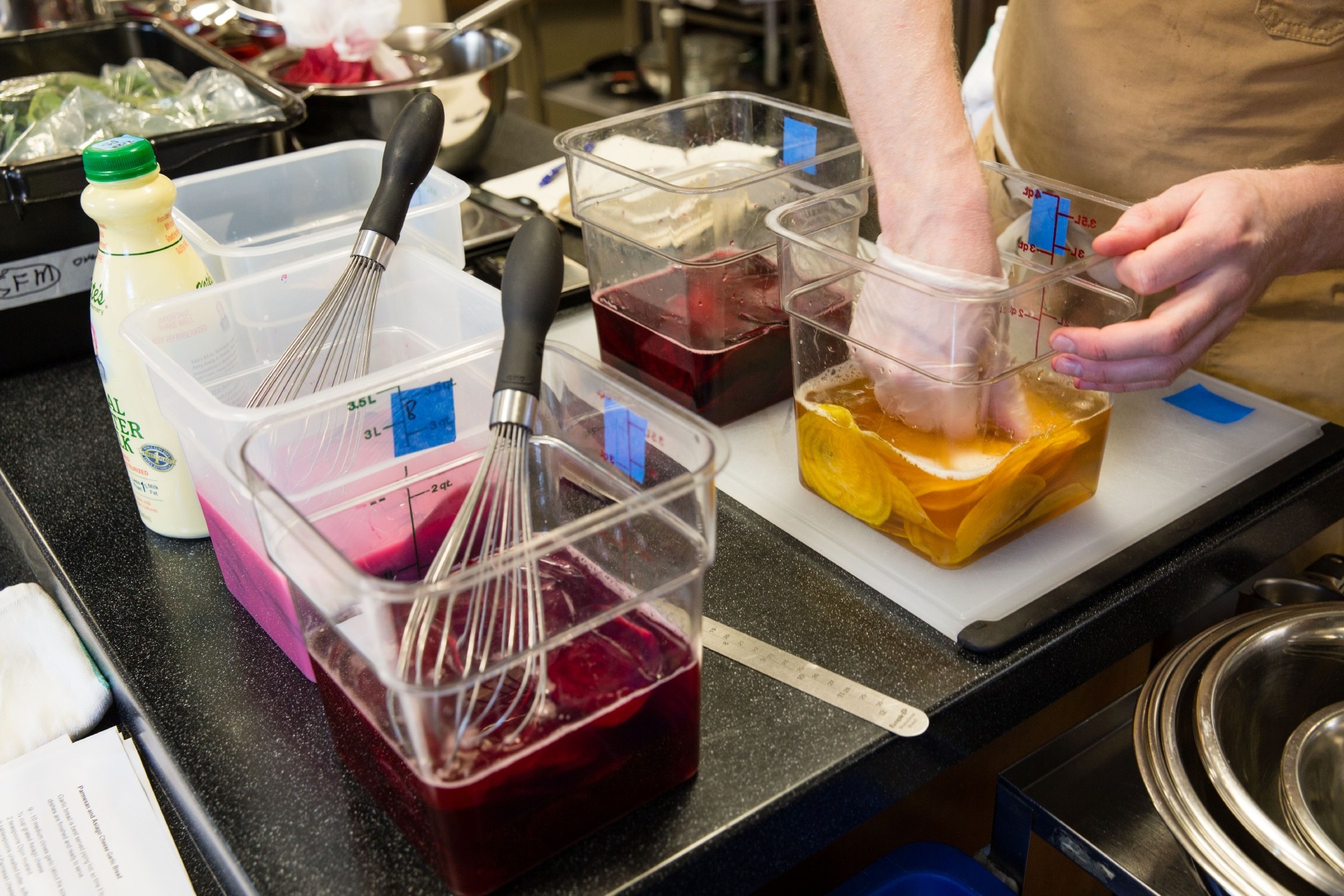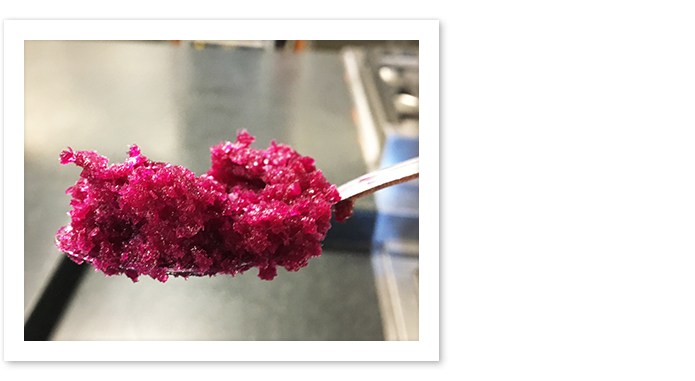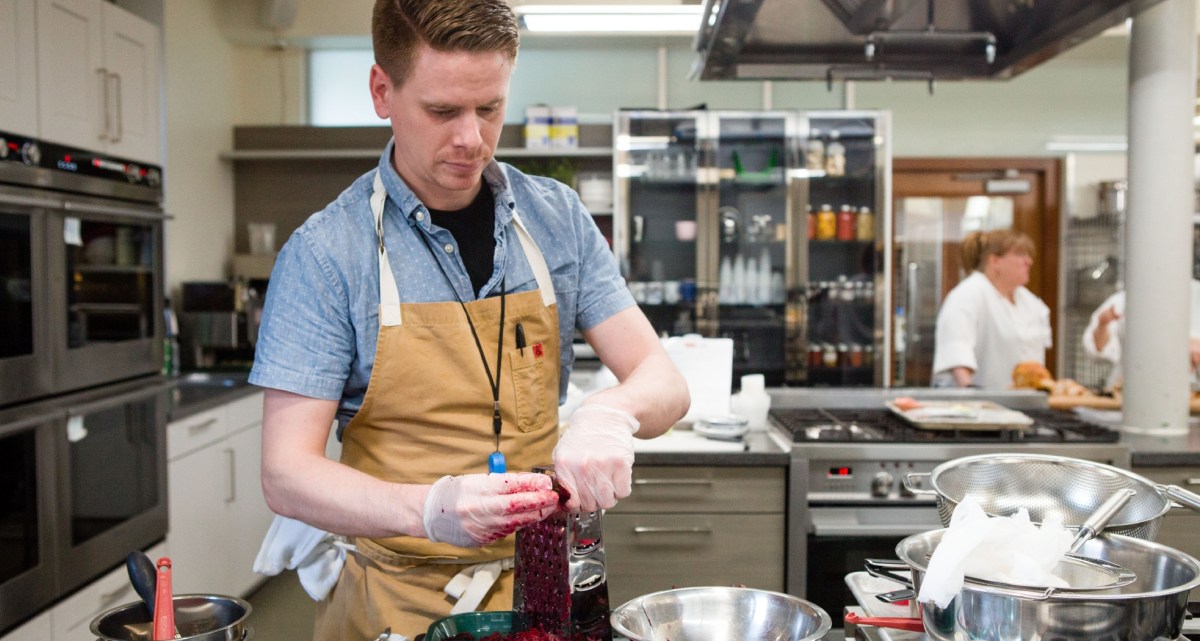In this weekly series, Associate Editor Tim Chin and Test Cook Sasha Marx take you behind the scenes of Cook’s Science and give you a glimpse into our recipe development process, from how we come up with recipe ideas, to test kitchen failures, to discoveries we make along the way. This week, Sasha’s struggle is real as he takes on his least favorite vegetable: the beet.
“Beets! You don’t even like beets!” That was my mother’s reaction at a recent family dinner when I explained that for my next round of recipe development I am embarking on a deep dive into beets (remember when we gave eggplant the spotlight last fall?). There are very few things in this world I don’t love to eat, and beets are on that list. They’re one of the few vegetables that can survive harsh winters, and I guess I unfairly resent them for that. I have cooked professionally in New England and Chicago, two areas known for their rough winters, and beets end up being one of the last holdouts of locally grown vegetables on restaurant menus until the arrival of a new spring bounty. To me, they are a constant reminder that (A) it’s really cold out and (B) if I lived in a warmer climate there would be variety in my winter produce. (I get it, San Francisco, you’re awesome, other than the fact that nobody can afford to live there.) I also don’t love the intense sweetness of beets. In order to survive cold winters, beets store a lot of their energy as sugar, which, like the sugar in ice cream, prevents large ice crystals from forming. Cell wall destruction by large ice crystals is the leading cause of death among less-sweet vegetables trying to grow in winter. Beets store this sugar reserve in what are called parenchyma cells. You may have noticed that a slice of beet is made up of concentric circles, not unlike tree rings. Those are alternating rings of parenchyma cells (and stored sugar) and of vascular tissue, which transports nutrients throughout the plant. So, I guess beets have at least one fun fact.
When I volunteered for the beet deep dive assignment, it wasn’t because I was itching to spend weeks preparing my least favorite vegetable. Rather, I saw it as a challenge similar to that of creating something tasty with offal. Chefs often talk about how a cook’s skill is most evidenced not by properly preparing a prime cut of beef, but by creating something delicious out of an off-cut that others would discard as trash. Steak and truffles sell themselves, but kidneys and beets need some help. Could I come up with a few beet recipes that are tasty and maybe even a little off the “beet-en” path (beet and goat cheese salad, you’ve had your moment)? I am in the process of finding out.
When Tim and I start on a new batch of recipes, the first week of testing is always a little chaotic, but exciting. I like to start the process by brainstorming ideas in our shared office before setting foot in the test kitchen. I’ll scribble down thoughts in my notebook or on the giant dry-erase board that we have dedicated for recipe ideas. If Tim is unlucky and happens to be working at his desk during this time, I’ll pepper him with questions, puns and half-baked pitches: “Would you be into beet Wellington?” “Beet jerky?” “What about a spicy, braised cashew bao titled Cashew Me Outside, How Bao Dah?” That’s when he usually puts on his headphones and ignores me. After I devise a list of recipe ideas, I sit down with executive editor Dan Souza to sketch out a game plan for recipe development. When we’re developing a suite of recipes centered around an ingredient we aim to have a good variety of techniques, flavor profiles, degree of difficulty, textures, and so on. Some items on the initial list never make it past this stage (sorry, beet Wellington). For the ones that do, I order the necessary ingredients, and start cooking.

One of the ideas that made the cut for the proposed suite of beet recipes is a granita made with beet kvass—a lightly fermented Eastern European beverage in the same ballpark as kombucha—and Campari, the Italian liqueur that gives bitterness to Negroni cocktails. The kvass itself is part of a dual fermentation project: I’m fermenting beets for a borscht-inspired sandwich, and the brine from that fermentation process becomes the kvass for the granita. I love recipes that minimize waste and use byproduct, and I really love the idea of turning sweet beets into something sour and fermented, and then combining it with the bitterness of Campari to make a refreshing granita. I made a test batch of beet kvass (although a somewhat bastardized version, seeing as I omitted rye bread, which is traditionally used to help jump-start the fermentation process), which I then mixed with Campari and a little sugar. I popped the mixture in the freezer, pulling it out occasionally to scrape with a fork until it had set up with the snow cone texture I was looking for. Tim and I tasted it and were instant fans—it was a striking deep purple Welch’s grape color, and, at least to me, tasted like a Negroni slushie with a hint of beet. I excitedly called for a team tasting. The rest of the Cook’s Science team did not have the same reaction. “Challenging”, “rough”, and “aggressive” were very diplomatic assessments offered by Molly, Dan, and Kristin. The only person on our editorial staff who enjoyed it was senior editor Paul Adams. We were evenly split. I didn’t want to give up on the idea, so I made some adjustments and created two new batches—increasing the sugar, and lowering the amount of Campari. Same results. Split decisions like this are actually pretty rare with our team. While we often go back and forth on seasoning levels, whether to include a garnish, and the like, we usually reach group consensus on the overall scope of a dish pretty quickly. As of now, we still can’t agree on the granita, and it looks like it might be a recipe that ends up on the cutting room floor. I still have hope, though. This week I’ve made some additional tweaks with a new batch of kvass that will be ready soon.

What do you think? Would you want a recipe for a beet-Negroni granita? Let us know in the comments!
[Editor’s Note: Keep your eye out for Sasha’s suite of beet recipes coming your way on Cook’s Science in late March/early April.]
Photography by Steve Klise and Kevin White.




